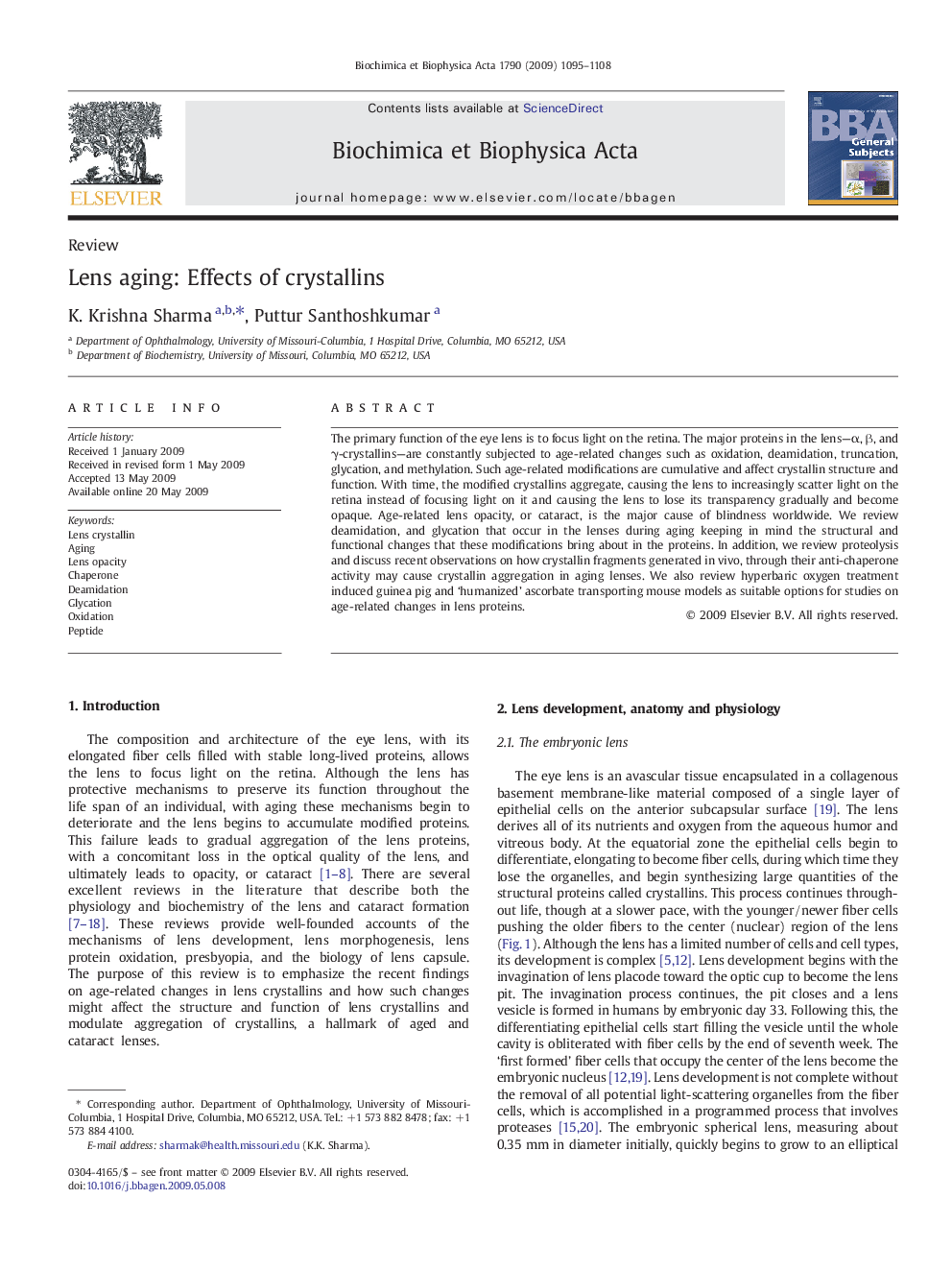| کد مقاله | کد نشریه | سال انتشار | مقاله انگلیسی | نسخه تمام متن |
|---|---|---|---|---|
| 1948081 | 1054674 | 2009 | 14 صفحه PDF | دانلود رایگان |

The primary function of the eye lens is to focus light on the retina. The major proteins in the lens—α, β, and γ-crystallins—are constantly subjected to age-related changes such as oxidation, deamidation, truncation, glycation, and methylation. Such age-related modifications are cumulative and affect crystallin structure and function. With time, the modified crystallins aggregate, causing the lens to increasingly scatter light on the retina instead of focusing light on it and causing the lens to lose its transparency gradually and become opaque. Age-related lens opacity, or cataract, is the major cause of blindness worldwide. We review deamidation, and glycation that occur in the lenses during aging keeping in mind the structural and functional changes that these modifications bring about in the proteins. In addition, we review proteolysis and discuss recent observations on how crystallin fragments generated in vivo, through their anti-chaperone activity may cause crystallin aggregation in aging lenses. We also review hyperbaric oxygen treatment induced guinea pig and ‘humanized’ ascorbate transporting mouse models as suitable options for studies on age-related changes in lens proteins.
Journal: Biochimica et Biophysica Acta (BBA) - General Subjects - Volume 1790, Issue 10, October 2009, Pages 1095–1108